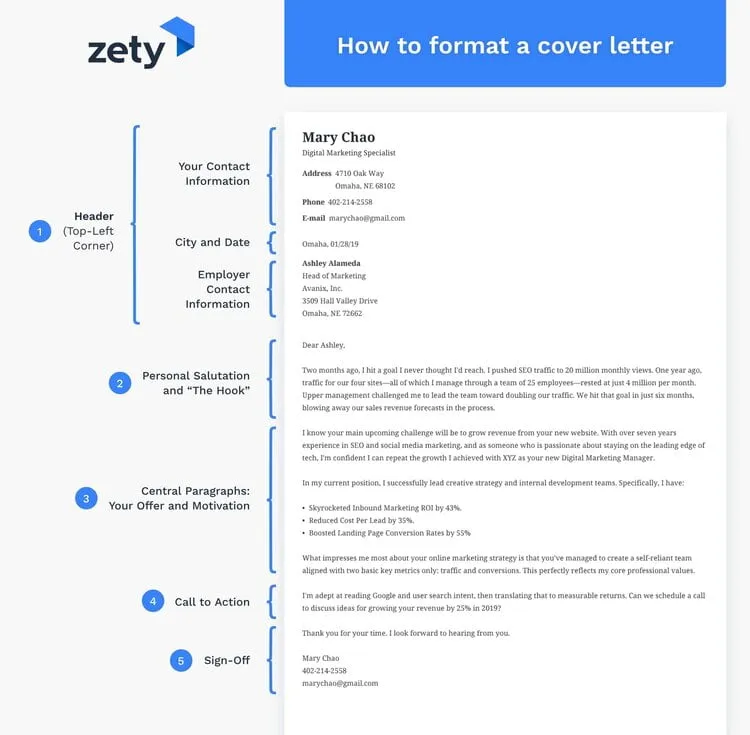Cover Letter Format What is it?
A cover letter is a crucial document accompanying your resume when applying for a job. Its primary purpose is to introduce you to a potential employer, highlight your key skills and experiences, and express your interest in the position. Unlike a resume which is a factual summary, a cover letter allows you to showcase your personality, explain why you’re a good fit for the company and role, and demonstrate your communication skills. The format is important because a well-formatted cover letter is easy to read and makes a positive first impression. A poorly formatted one can be overlooked, regardless of the strength of your qualifications. It’s your first chance to make a strong impact and get noticed by the hiring manager, so it’s essential to get it right.
Essential Cover Letter Formatting Elements
Several formatting elements are crucial to ensure your cover letter looks professional and is easily readable. These include contact information, date, recipient details, a professional salutation, clear paragraphs, and a concise closing. Adhering to these elements makes your letter look polished and shows attention to detail, which are highly valued by employers. Correct formatting demonstrates respect for the reader and the application process itself. Proper formatting helps to maintain a professional and organized appearance. Each element plays a key role in making your cover letter stand out for the right reasons.
Contact Information
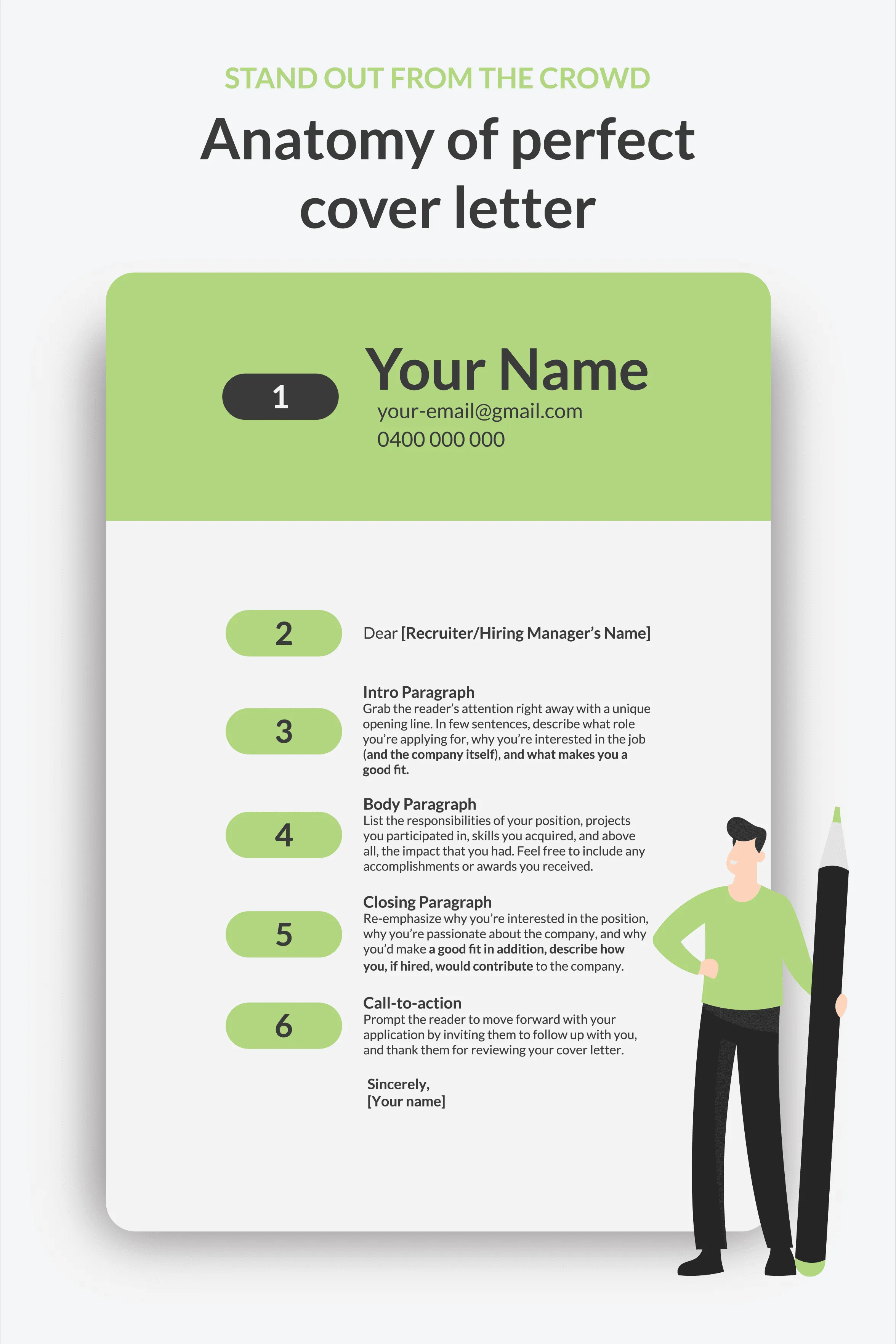
Start your cover letter with your contact information. This typically includes your full name, address, phone number, and email address. Place this information at the top of the letter, either left-aligned or centered. Make sure the contact information is accurate and up to date. It is crucial that the employer can easily reach you, should they be interested in your application. Double-check for any typos or errors in your email address and phone number. This simple step ensures that potential employers can contact you without any difficulties, greatly increasing your chances of being considered for the job.
Date and Recipient Details
Below your contact information, include the date you are writing the letter. Then, address the letter to the hiring manager or the specific person mentioned in the job posting. If a name isn’t provided, you can use a general title such as ‘Hiring Manager.’ Always try to find a specific name if possible, as it shows you’ve done your research and have paid attention to the details. Include the company’s name and address as well. The recipient’s details should be aligned to the left, mirroring the contact information. This structured layout makes the letter look professional and easy to navigate.
Professional Salutation
Begin your cover letter with a professional salutation. ‘Dear Mr./Ms./Mx. [Last Name]’ is a common and appropriate choice, as it immediately establishes a respectful tone. If you are unsure of the recipient’s gender or name, ‘Dear Hiring Manager’ is also acceptable. Avoid overly casual greetings such as ‘Hello’ or ‘Hi’. Ensure the salutation aligns with the formality of the job and the company culture. The salutation sets the tone for the rest of your letter, and it should be polite and respectful. Getting this right sets a positive precedent for the rest of your application.
Cover Letter Formatting Top 7 Tips
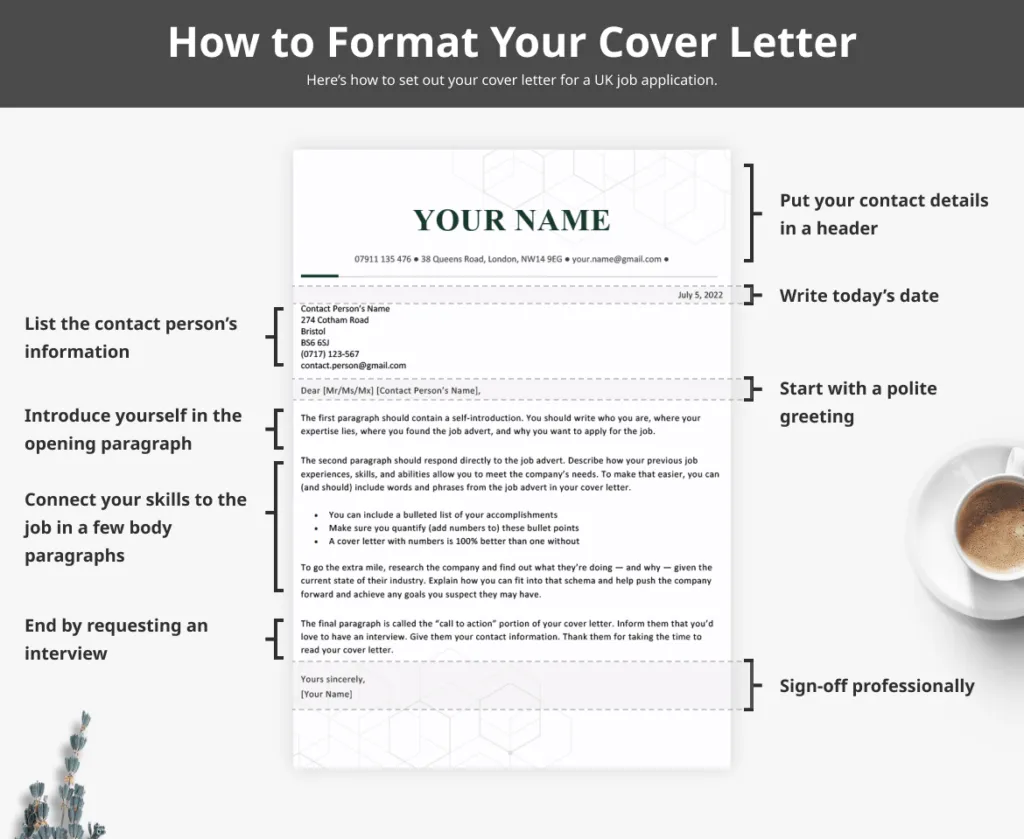
Tip 1 Use a Professional Tone
The tone of your cover letter should be professional, formal, and respectful. Avoid slang, jargon, and overly casual language. Use clear, concise language to communicate your points effectively. Focus on showcasing your skills and accomplishments, and demonstrate your enthusiasm for the role without being overly effusive. A professional tone shows respect for the recipient and indicates your seriousness about the job. Maintain a tone that aligns with the industry and the company’s culture. This helps you create a favorable first impression and highlights your ability to communicate effectively in a professional environment.
Tip 2 Keep It Concise and Focused
A cover letter should be concise, typically fitting on a single page. Get straight to the point, highlighting the most relevant information about your qualifications and why you’re a good fit for the role. Avoid rambling or including unnecessary details. Focus on what makes you the best candidate and tailor your letter to the specific job description. Keep your paragraphs brief and well-structured, making it easy for the reader to scan and grasp the key points. A focused and concise cover letter shows that you value the reader’s time, and it demonstrates your ability to prioritize and summarize information effectively, which are crucial skills in the workplace.
Tip 3 Customize for Each Application
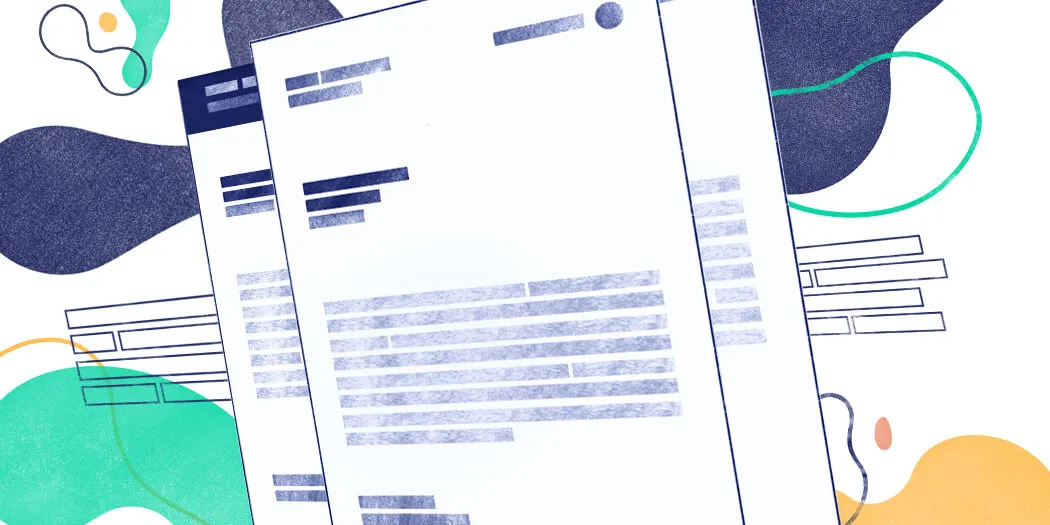
Never use a generic cover letter for multiple job applications. Tailor each letter to the specific job you are applying for and the company. Research the company and the role, and then highlight the skills and experiences that are most relevant. Mention specific aspects of the job description and explain how your qualifications align with the requirements. Personalization shows that you are genuinely interested in the position and have taken the time to understand the employer’s needs. Customization increases your chances of making a positive impression and securing an interview, as it demonstrates your attention to detail and commitment to the job.
Tip 4 Highlight Relevant Skills
Your cover letter is a great place to highlight the skills and experiences that make you a suitable candidate. Carefully review the job description and identify the key skills and qualifications that the employer is looking for. Then, in your cover letter, provide specific examples of how you have demonstrated these skills in previous roles or experiences. Quantify your achievements whenever possible. Make sure the skills are relevant to the job, and use keywords from the job description. Highlighting relevant skills increases your chances of capturing the hiring manager’s attention, which emphasizes your qualifications and suitability for the role and boosts your chances of being selected.
Tip 5 Show Enthusiasm
Express your enthusiasm for the role and the company. Let the employer know why you are excited about the opportunity and what specifically attracts you to the position. Mention specific projects, company values, or industry trends that resonate with you. Enthusiasm can set you apart from other candidates by demonstrating your passion and interest. It can showcase your personality and make the employer more interested in getting to know you. However, keep your enthusiasm genuine and professional. This will show you’re not just looking for any job, but this job, indicating you would bring a high level of motivation to the role.
Tip 6 Proofread Carefully
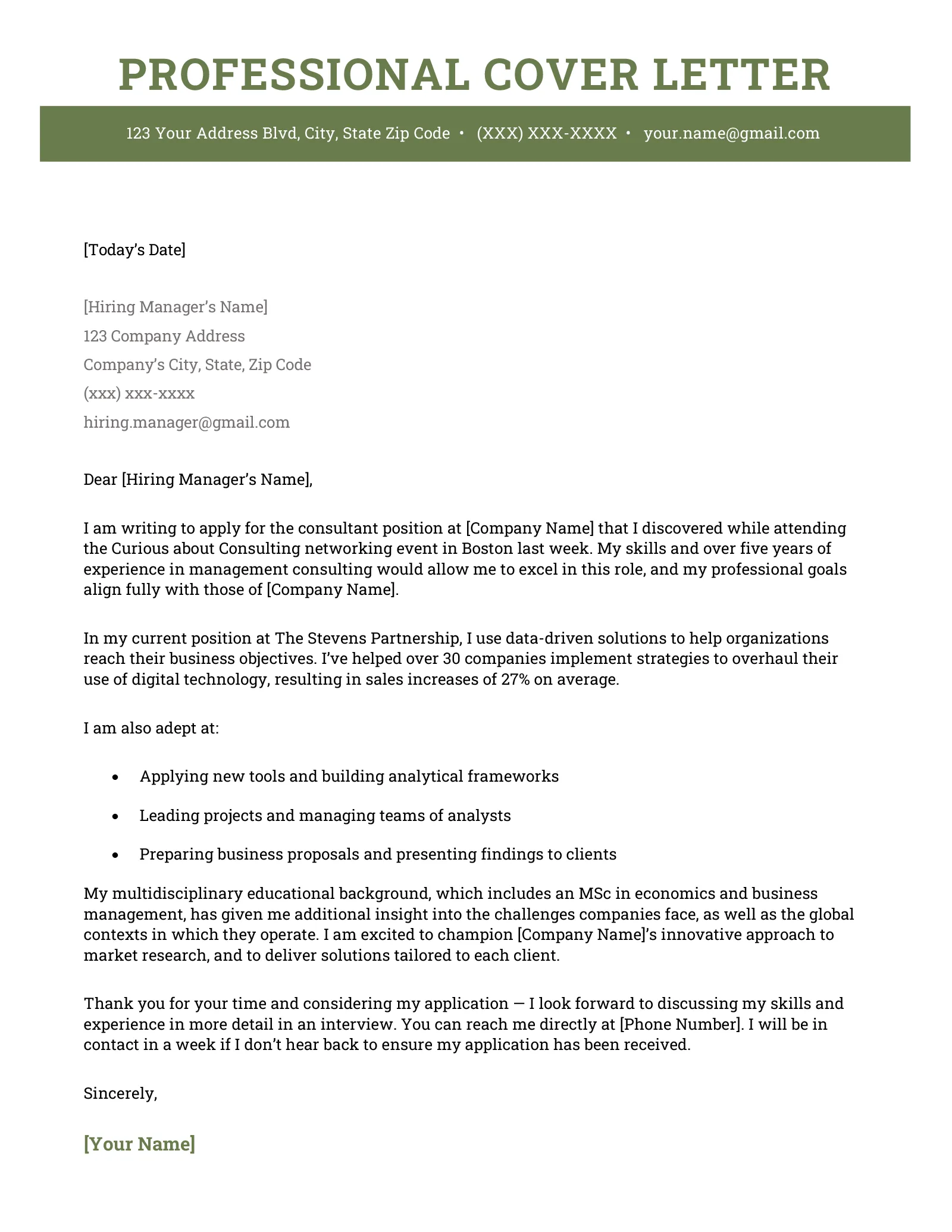
Before submitting your cover letter, proofread it carefully for any grammatical errors, typos, or formatting inconsistencies. A polished cover letter demonstrates your attention to detail and professionalism. Read it multiple times, and consider asking a friend or colleague to review it as well. Errors can create a negative impression and undermine your credibility. Proofreading helps ensure your cover letter is clear, concise, and error-free. A well-proofread cover letter is a reflection of your commitment to quality and your ability to communicate effectively in writing, which is highly valued by employers.
Tip 7 Choose the Right Font and Layout
Select a professional and readable font, such as Times New Roman, Arial, or Calibri. The font size should be easy on the eyes, typically 11 or 12 points. Use a clean layout with consistent spacing, margins, and alignment. Avoid excessive use of bolding, italics, or underlining. A well-formatted cover letter is visually appealing and easy to read. The right font choice enhances readability and professionalism. Proper layout ensures that the document is organized and the information is presented in a clear and accessible manner. An organized and visually appealing layout helps the reader to focus on your content.
Cover Letter Format Final Thoughts
Mastering the cover letter format is crucial for job seekers. By following the guidelines, you can create a professional and impactful document that significantly increases your chances of landing an interview. Remember to tailor each letter to the specific job and company, highlight relevant skills, and express your enthusiasm. Proofread carefully and always maintain a professional tone. A well-crafted cover letter is a powerful tool in your job search, so invest the time and effort to make it shine. Proper cover letter formatting significantly elevates your application and makes you stand out from the competition, making you a strong candidate.
